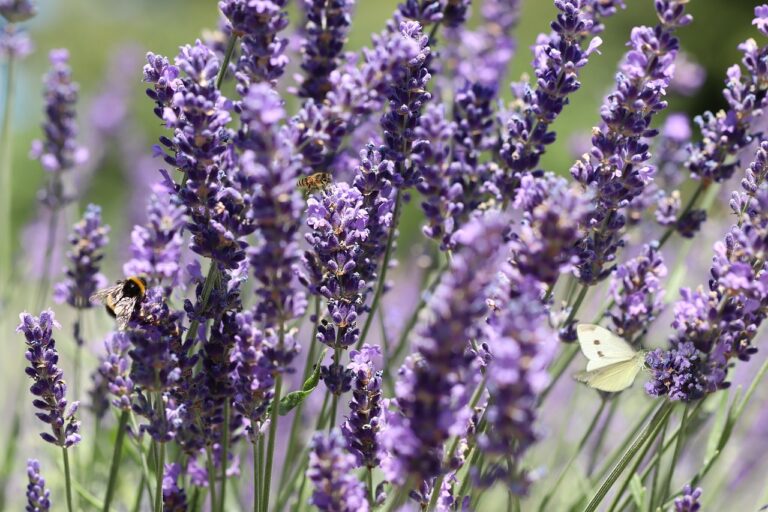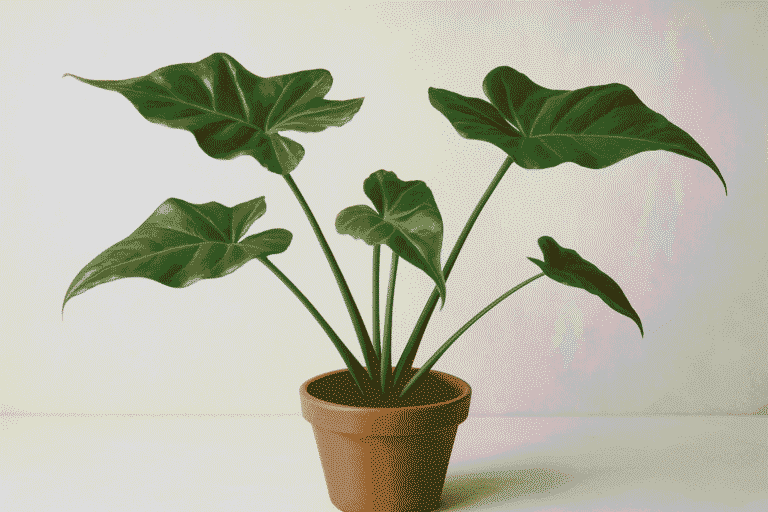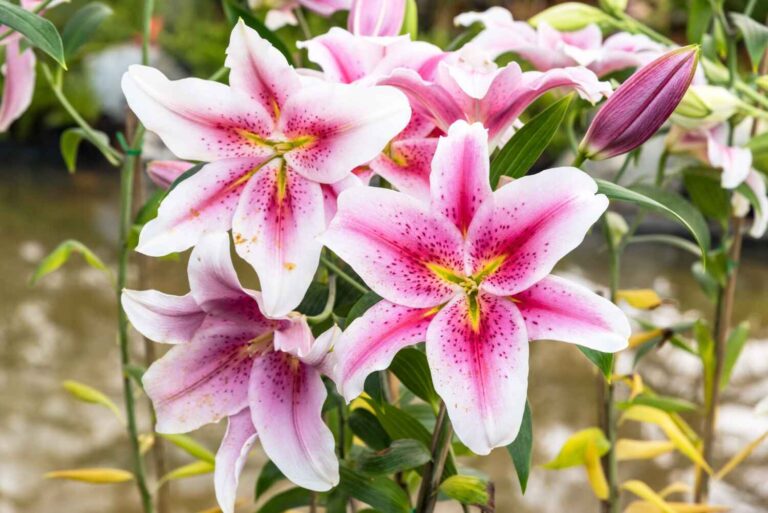Container Gardening with Lemon Coral Sedum: Creative Uses & Care Tips
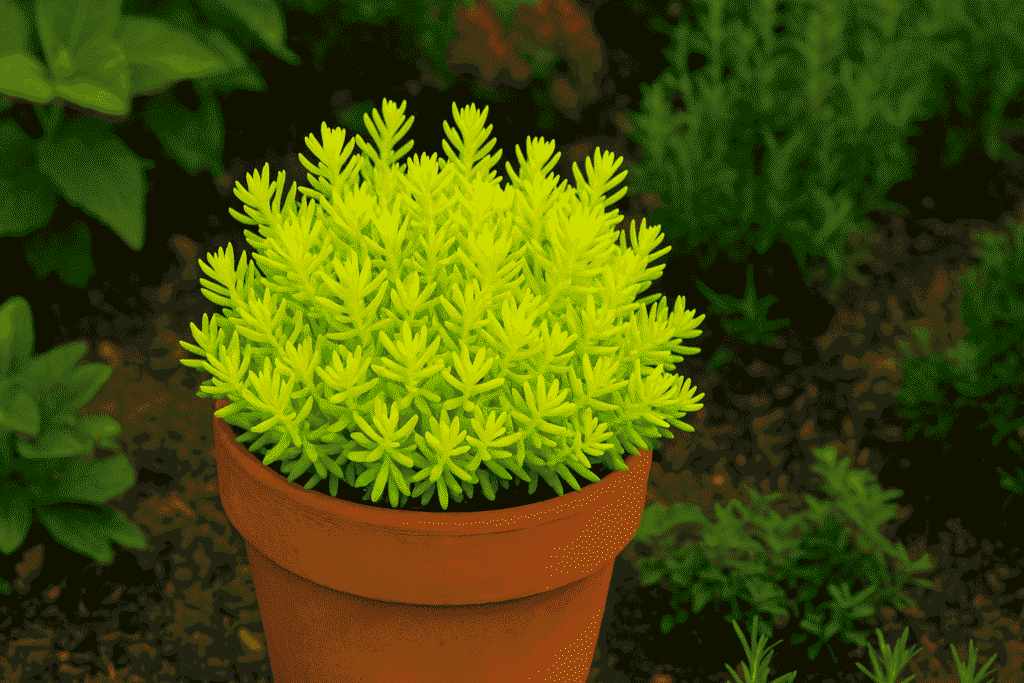
If you’re looking for a plant that delivers vibrant color, thrives with minimal care, and adds instant charm to your outdoor space, lemon coral sedum might just become your new gardening favorite. I first discovered this sunny little beauty at a local garden center, its chartreuse foliage practically glowing under the summer sun. Once I brought it home, I realized just how versatile it is—especially in container gardening. Whether you have a sprawling backyard patio, a cozy apartment balcony, or just a sunny windowsill, lemon coral sedum brings that pop of life your space craves.
One of the things I love most is how it thrives in the U.S. summer heat without demanding constant attention. It’s drought-tolerant, loves full sun, and pairs beautifully with other plants, making it the perfect “filler” in the popular thriller-filler-spiller container arrangement. I’ve tucked it into mixed planters alongside bold petunias, cascading calibrachoa, and even other succulents, and it never fails to steal the show.
Plus, lemon coral sedum isn’t just pretty—it’s tough. From my experience, it’s a plant that forgives the occasional missed watering and even seems to thrive when left to do its own thing. Whether you’re designing a lush summer container display, sprucing up your porch steps, or adding a splash of color to a drought-tolerant garden, this plant is a reliable choice. In this guide, I’ll share creative ways to use lemon coral sedum in containers and simple care tips to keep it looking its best all season long.
Why Lemon Coral Sedum Is Perfect for Container Gardening?
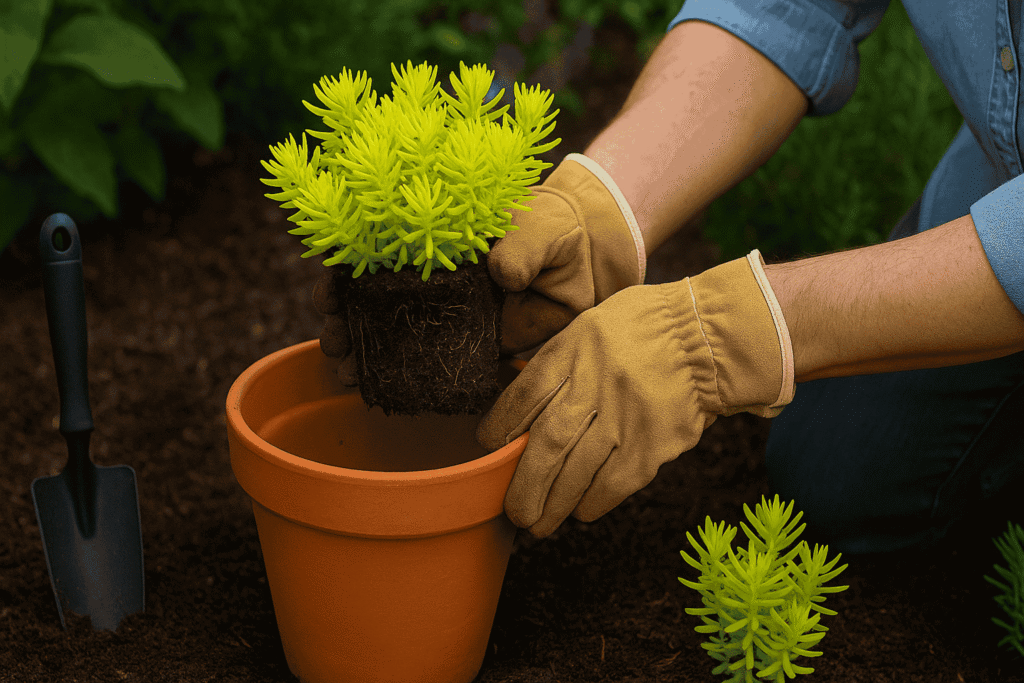
When it comes to adding easy, eye-catching charm to your patio, porch, or balcony, lemon coral sedum is a plant that truly shines. I first fell in love with it after planting a few in a mixed container on my front steps—and honestly, they ended up stealing the whole show. With its bright chartreuse foliage and soft, textured leaves, lemon coral sedum adds a burst of color that looks good from spring through fall.
One reason it’s so perfect for container gardening is its low-maintenance nature. In most parts of the U.S., it thrives in full sun, handles heat like a champ, and doesn’t wilt if you forget a watering or two. That makes it an ideal choice for busy gardeners or anyone who wants big impact without constant fuss.
Another bonus? It plays well with others. Whether you tuck it around tall “thriller” plants or let it spill gracefully over the edges of a pot, lemon coral sedum brings balance and texture to your design. Plus, its drought tolerance means less time with the watering can and more time enjoying your outdoor space. Once you try it in a container, you’ll see why it’s a go-to favorite for so many gardeners across the U.S.
Creative Ways to Use Lemon Coral Sedum in Pots and Planters
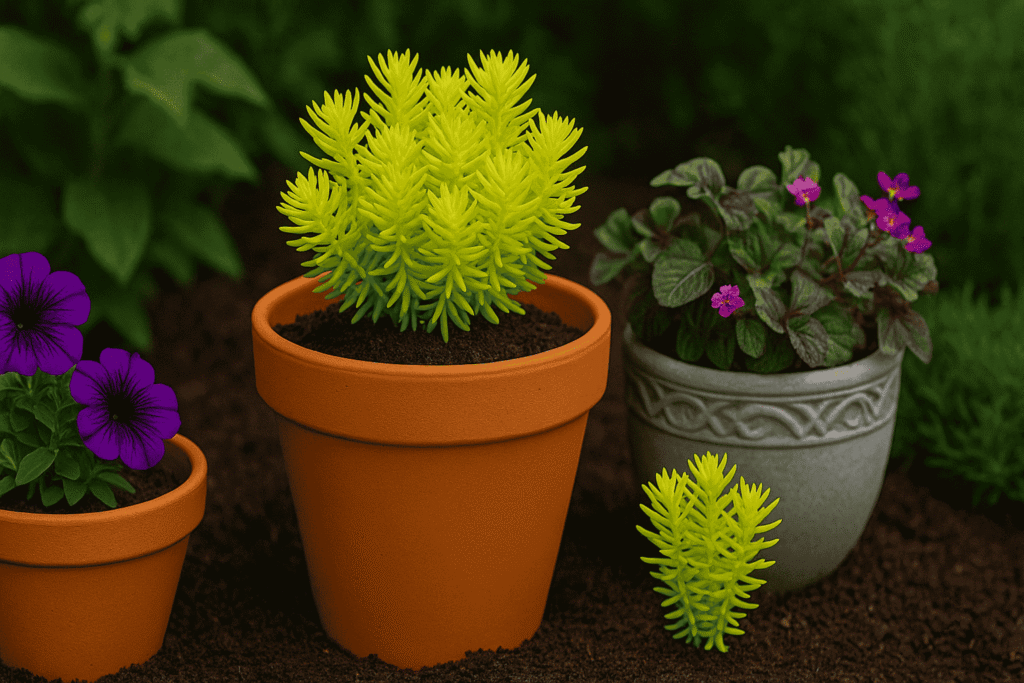
One of the best things about lemon coral sedum is how effortlessly it transforms any pot or planter into a showpiece. I’ve used it in everything from sleek modern containers on my deck to rustic clay pots by the garden gate, and it always adds that perfect touch of texture and color. Its vibrant chartreuse foliage works like a designer’s secret weapon—it pops against deep greens, bold blooms, and even neutral stone or wood tones.
For a classic look, try the “thriller-filler-spiller” method. I love pairing lemon coral sedum as the “filler” around a tall centerpiece plant like ornamental grass, then letting it spill gracefully over the container edges. It also looks stunning when combined with petunias, calibrachoa, or other sun-loving annuals for a full, lush arrangement.
If you’re short on space, lemon coral sedum shines in small pots on balconies, window boxes, or even as a living centerpiece for an outdoor table. I’ve also tucked it into mixed succulent bowls where its bright color brings the whole arrangement to life. Whether you prefer bold statement planters or subtle accent pots, this versatile plant brings year-round style and charm to any container garden.
Lemon Coral Sedum Care: Sun, Water, and Soil Tips
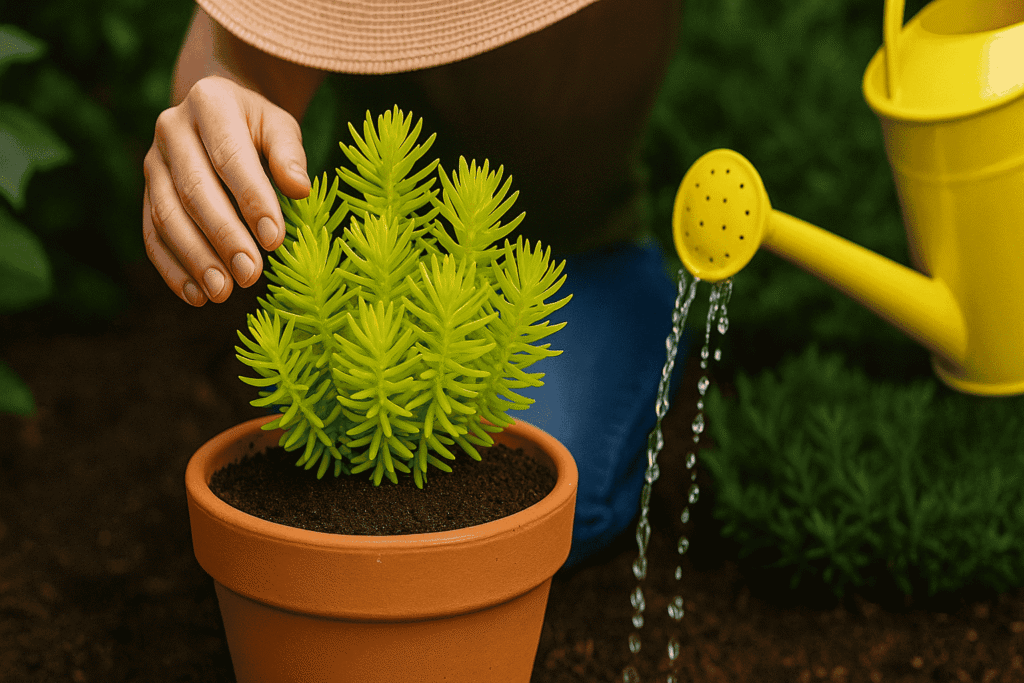
When it comes to lemon coral sedum care, I’ve learned that a little attention goes a long way. In my own U.S. garden, the magic starts with sunlight—this plant loves full sun, ideally 6–8 hours a day. When it gets plenty of light, the foliage turns that brilliant chartreuse shade that caught my eye at the garden center. If it’s in too much shade, the color fades and the plant can get leggy.
Watering is another area where lemon coral sedum keeps things easy. I let the soil dry out completely before giving it a drink. It’s drought-tolerant, so it actually prefers a little neglect over soggy conditions. The key is a well-draining potting mix, like one designed for succulents, paired with a container that has good drainage holes.
As for feeding, I usually give mine a light dose of slow-release fertilizer at the start of summer and then let it do its thing. Minimal maintenance, vibrant color, and unbeatable toughness—that’s what keeps me coming back to lemon coral sedum year after year. Follow these sun, water, and soil tips, and you’ll see why this plant is a container garden favorite across the U.S.
Lemon Coral Sedum in Winter: How to Protect It from the Cold?
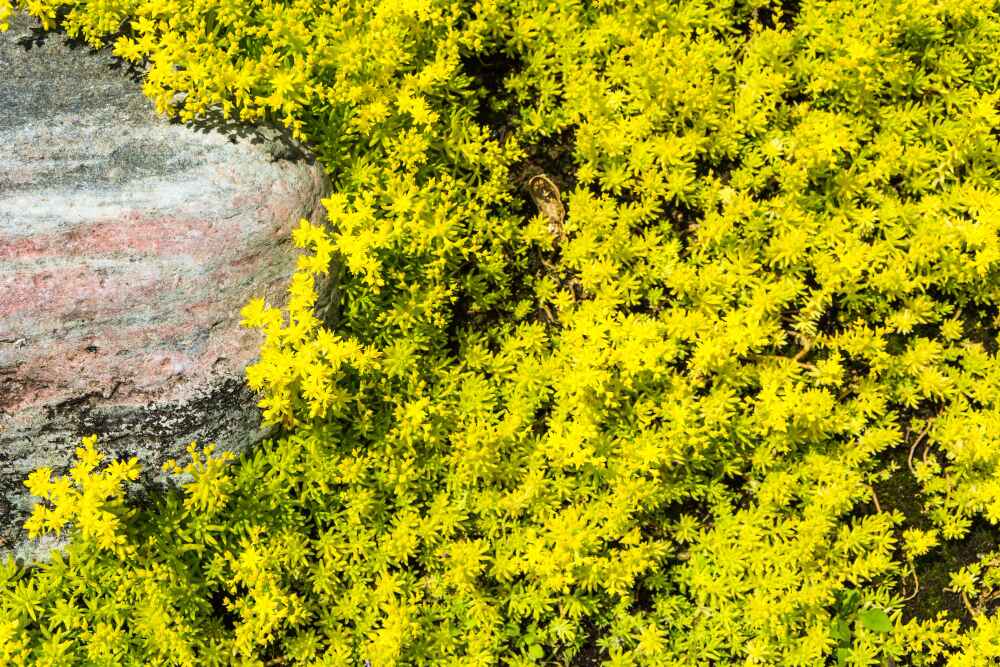
When it comes to lemon coral sedum in winter, I’ve learned the approach really depends on where you live in the U.S. In warmer zones (7–11), it can often stay outdoors year-round without much fuss. But here in my colder climate, I’ve had to get a little creative to keep that gorgeous chartreuse foliage alive until spring.
As soon as the first frost warnings appear, I move my potted lemon coral sedum into a sunny indoor spot, like a south-facing window or an enclosed porch. If I can’t bring the whole container inside, I’ll snip a few healthy cuttings and root them in small pots indoors. That way, I still get fresh, vibrant plants for next season.
For those lucky enough to have mild winters, keeping lemon coral sedum in well-drained soil is key—excess moisture in cold weather can rot the roots. A light mulch layer around the base can also help protect it from sudden temperature drops.
No matter your zone, giving a little extra attention to lemon coral sedum in winter ensures it bounces back strong in the spring, ready to brighten up your containers all over again.
Long-Term Success: Repotting and Refreshing Lemon Coral Sedum Containers

Keeping lemon coral sedum looking lush and vibrant year after year is easier than you might think, but it does benefit from a little refreshing now and then. In my own container gardens, I’ve found that by mid to late summer, the plant can start to get a bit crowded or leggy—especially if it’s been sharing space with fast-growing neighbors. That’s when repotting or trimming makes all the difference.
Every spring or early summer, I like to gently lift my lemon coral sedum from its container, loosen the roots, and place it in fresh, well-draining potting mix. If it’s really outgrown its home, I’ll split the plant into smaller clumps and replant them in new containers. This not only keeps the original plant healthy but also gives me more pots of that gorgeous chartreuse color to enjoy.
I’ve learned that a refreshed lemon coral sedum bounces back quickly, rewarding you with dense growth and vibrant foliage all season long. Whether you’re giving it a bigger pot or just a soil refresh, a little maintenance goes a long way in keeping this drought-tolerant beauty thriving year after year in U.S. container gardens.
Conclusion
After years of growing lemon coral sedum in my own containers, I can confidently say it’s one of the most rewarding plants you can add to your garden. Its vibrant chartreuse foliage, low-maintenance nature, and incredible versatility make it a true standout, whether it’s the star of the show or playing a supporting role in mixed planters. I’ve used it on sunny patios, tucked it into window boxes, and even brightened up my porch steps—and every time, it delivers that burst of color and texture that turns heads.
What I love most is how easy it is to grow, even for busy gardeners. With the right sunlight, occasional watering, and well-draining soil, lemon coral sedum will thrive from spring through fall. And with a little extra care in winter, you can enjoy it year after year.
For U.S. gardeners looking for a plant that’s tough, beautiful, and endlessly adaptable, lemon coral sedum is a choice you won’t regret. Once you see how it transforms your containers, you might just find yourself planting it everywhere—just like I did. It’s proof that sometimes, the simplest plants bring the most joy.
Frequently Asked Questions
Lemon coral sedum is a low-maintenance, drought-tolerant plant with bright chartreuse foliage, perfect for containers and sunny garden spots.
Provide full sun, water only when the soil is dry, and use well-draining potting mix for healthy growth.
In warmer U.S. zones (7–11), it can stay outdoors year-round. In colder areas, bring it indoors or take cuttings before frost.
Repot every 1–2 years or when it becomes root-bound, refreshing the soil to encourage new growth.
Yes! Its vibrant color, trailing habit, and low care needs make it perfect for pots, window boxes, and mixed planters.
Table of Contents
- Container Gardening with Lemon Coral Sedum: Creative Uses & Care Tips
- Why Lemon Coral Sedum Is Perfect for Container Gardening?
- Creative Ways to Use Lemon Coral Sedum in Pots and Planters
- Lemon Coral Sedum Care: Sun, Water, and Soil Tips
- Lemon Coral Sedum in Winter: How to Protect It from the Cold?
- Long-Term Success: Repotting and Refreshing Lemon Coral Sedum Containers
- Conclusion
- Frequently Asked Questions
- Mona Lavender Plant: Complete Growing Guide for Beginners
- Alocasia Stingray Plant Guide: Tips for Healthy Growth
- Pink Lilly Flower: Growing and Caring for Pink Lillies

